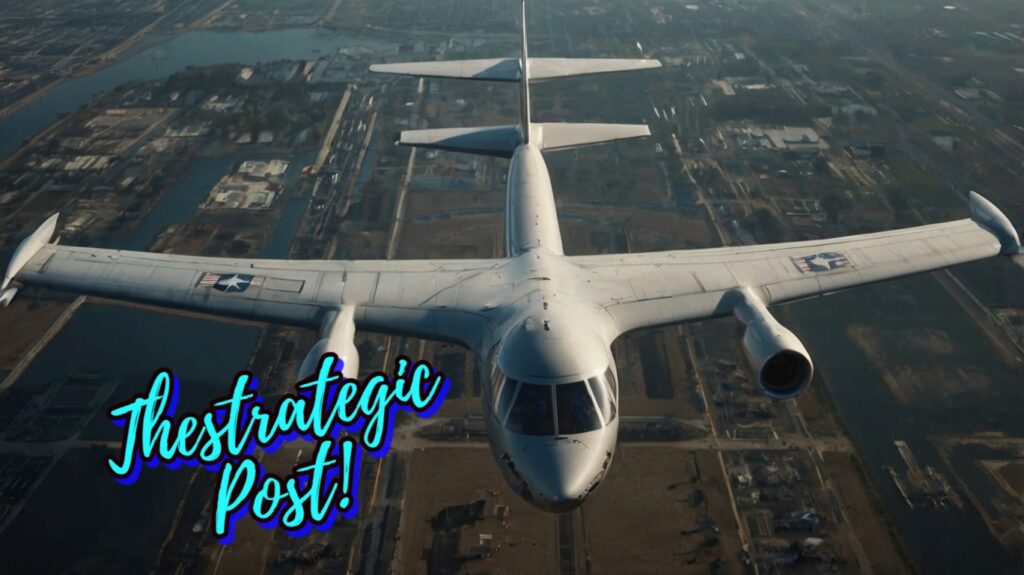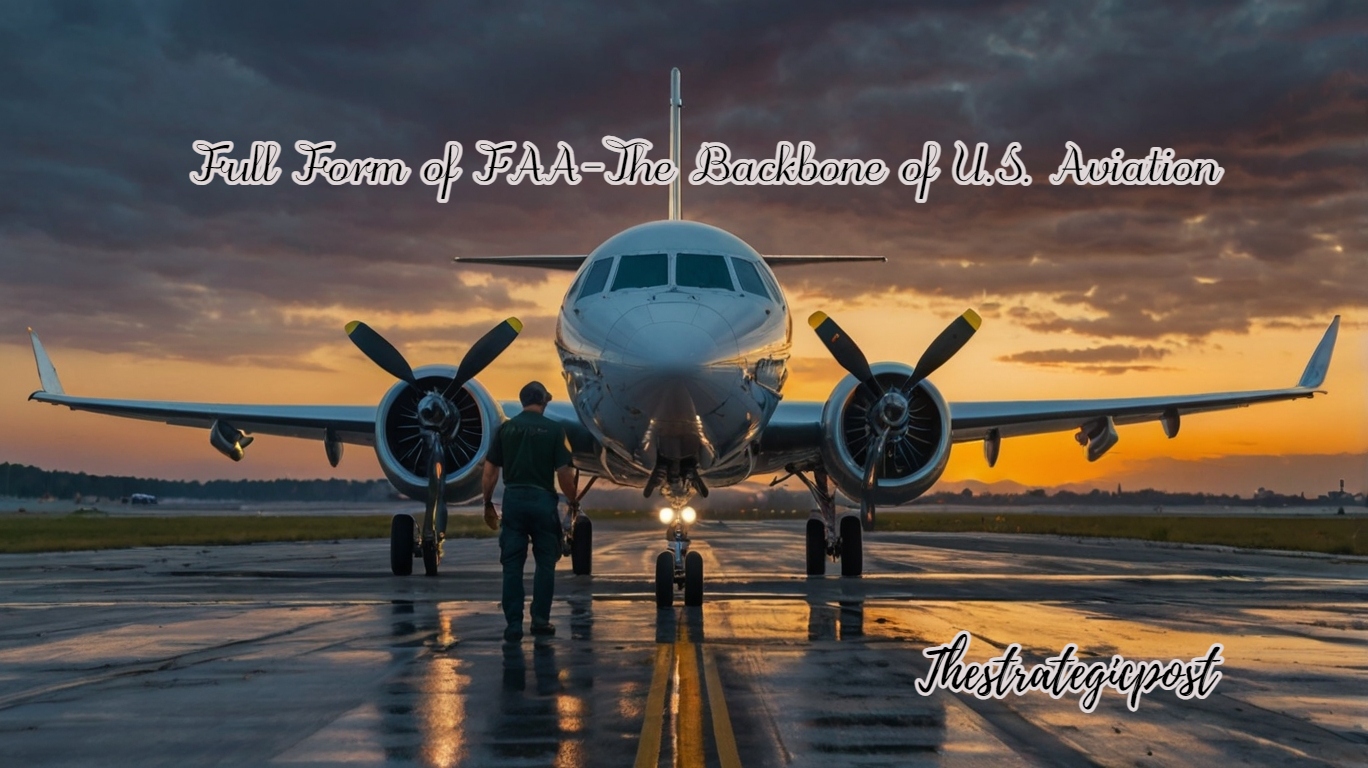FAA: Federal Aviation Administration – The Backbone of U.S. Aviation
Date: October 24, 2024– By Saad.
Full Form of FAA, When it comes to flying in the U.S., one name that’s impossible to miss is the Federal Aviation Administration (FAA). From managing air traffic to ensuring that every aircraft meets safety standards, the FAA is the powerhouse keeping the skies safe and secure. You might not think about it while grabbing your boarding pass or sipping coffee in an airport terminal, but the FAA is working behind the scenes to make sure everything runs like clockwork.
So, what exactly is the FAA, and why is it so critical to aviation? Let’s break it down!

What is the Federal Aviation Administration (FAA)?
The Federal Aviation Administration (FAA) is the United States’ civil aviation authority responsible for overseeing everything related to air travel. Whether it’s the planes you fly on, the airports you visit, or even the flight routes across the skies, the FAA regulates, manages, and maintains safety standards.
Operating under the Department of Transportation, the FAA was founded in 1958 to tackle aviation safety issues and has grown to oversee one of the busiest and most complex airspaces in the world. It ensures that over 5,000 aircraft in U.S. skies at any given moment are flying safely and that air traffic moves without a hitch.
Key Roles of the FAA
So, what does the FAA actually do on a daily basis? You’d be surprised at how much they’re juggling:
1. Air Traffic Management
The U.S. has some of the busiest airports in the world, and the FAA makes sure planes are guided safely from takeoff to landing. It oversees air traffic control centers that monitor thousands of flights daily, coordinating routes and ensuring safe distances between aircraft.
2. Safety Standards and Certifications
The FAA sets strict regulations to ensure that airlines, pilots, and aircraft meet high safety standards. It certifies every aspect of an aircraft—from engines to seatbelts—to make sure that passengers are flying on planes that have passed rigorous tests.
3. Pilot Licensing
Flying isn’t for just anyone, and the FAA makes sure of that. The administration handles pilot licensing, setting the standards for training and testing to guarantee that pilots are well-prepared to fly both commercial and private planes.
4. Airport Management and Development
Every airport you’ve flown in and out of—from major hubs like JFK and LAX to smaller regional airports—operates under FAA regulations. The FAA monitors airport operations to make sure that they run smoothly and that facilities meet required standards for both safety and efficiency.
5. Research and Development
The FAA is also a leader in advancing aviation technology. From testing the latest in aviation safety systems to developing next-gen air traffic control (ATC) systems, the administration is always working to make air travel faster, safer, and more efficient.
FAA and Air Traffic Control: Managing the Sky Like Pros
Ever wondered how thousands of planes manage to fly at once without crashing? That’s where the FAA steps in. It operates the most complex air traffic control (ATC) system in the world, with controllers based in 21 en-route centers and 500 control towers across the U.S. These controllers are like air traffic conductors, guiding planes safely across the country’s vast airspace.
The FAA also uses cutting-edge satellite technology and radar systems to monitor and communicate with aircraft, ensuring that everyone is on the right path. And with future-focused projects like the Next Generation Air Transportation System (NextGen), the FAA is working to transition the current ATC system to one based on satellite navigation for even better efficiency and safety.
Safety Standards: Why You Can Trust U.S. Aviation
If you’ve ever been nervous about flying, rest easy knowing that the FAA takes safety extremely seriously. Every aircraft must pass rigorous inspections and maintenance checks before they can carry passengers. And it doesn’t stop there—airlines must adhere to strict schedules for regular aircraft inspections.
In addition to certifying aircraft, the FAA also sets the rules for pilot training and testing. Commercial pilots go through years of training and exams to meet FAA standards, which ensure they can handle everything from smooth takeoffs to the rare emergency. Every time you board a plane, you can be confident that the crew and the aircraft have passed some of the most stringent safety standards in the world.
FAA’s Role in Airport Management and Development
It’s not just the skies that the FAA oversees. The administration is also heavily involved in the development and management of airports across the United States. The FAA provides funding for airport improvements, like expanding runways, upgrading terminals, or improving airfield safety systems.
Take Denver International Airport (DIA), for example. When it opened in 1995, it was the first major airport built from the ground up in decades, and the FAA played a crucial role in its design and air traffic management setup.
Why the FAA Matters to You
Whether you’re traveling for work, vacation, or family, the FAA makes sure that every journey is safe, efficient, and enjoyable. With a track record of over six decades in aviation safety and regulation, the FAA has kept the U.S. airspace secure and earned its place as one of the most respected aviation authorities in the world.
Next time you’re flying, remember that there’s a team of FAA professionals working behind the scenes to ensure your safety. From certifying pilots to keeping airport operations smooth, the FAA is there every step of the way.
What’s Next for the FAA?
The aviation industry is always changing, and the FAA is staying ahead of the curve. The administration is already exploring drone integration into U.S. airspace and developing safety regulations for commercial space travel. As technology advances and air traffic increases, the FAA is making sure the future of air travel stays safe, efficient, and accessible to all.
Wrapping it Up
The Federal Aviation Administration is an indispensable part of American air travel. Whether it’s keeping planes in the air safely, regulating airports, or planning the next big innovation in aviation, the FAA ensures that every flight in U.S. airspace is as safe and efficient as possible. So the next time you hop on a flight, you can thank the FAA for making your journey a smooth one!
Stay tuned for more aviation updates and insights as the FAA continues to lead the way in U.S. and global air travel!
If you Liked Reading our Blog Read More Blogs Here and Below is the Link to our WhatsApp channel Join it for the Latest Post Updates. (Read For WhatsApp Channel Privacy and Security Here).
.Disclaimer: The information presented in this blog is for educational and informational purposes only and should not be considered financial, Political, or cultural advice. All efforts have been made to ensure the accuracy of the content at the time of writing.
Think We Missed Something?
If you notice an error or have a suggestion, we encourage you to submit a correction. Help us keep our information up-to-date and reliable!











